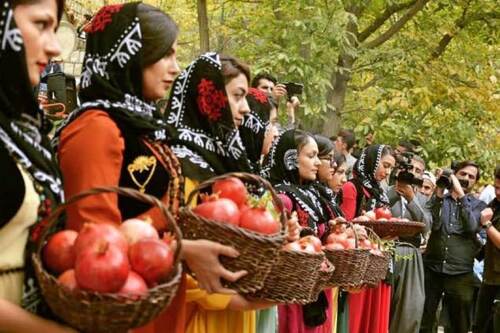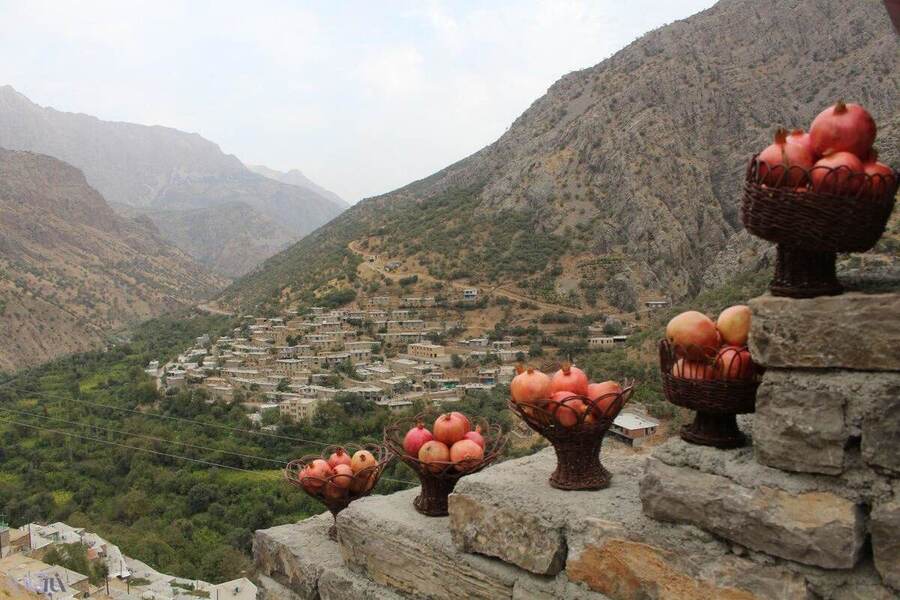In the provinces of the East part of Kurdistan, large industries that provide employment opportunities for a large number of citizens are very low and the income and livelihood of most Kurdish people are tied to agriculture; Kurdistan is known as an agricultural region. Pomegranate is one of the fruits produced in the eastern part of Kurdistan. This fruit is among the ten best kinds of fruit in the world and is produced in neighboring countries and regions such as Iran, Afghanistan, Pakistan, the Kurdistan region, and Turkey.
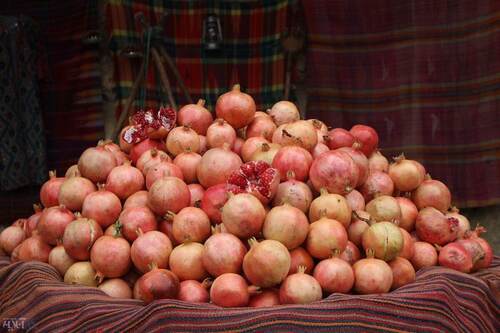
Hawraman Pomegranate is the highest quality in Iran. Every year in the middle of September they begin to harvest the product and it continues to the middle of October. Hawraman pomegranate is one the most organic pomegranates in Iran which is not only an opportunity for the economy of Hawraman region but it also plays a special role in the health of the people in the society. The beautiful, mystical, and mountainous nature of Hawraman under the shadow of pomegranate trees is one of the most prominent features of this area. Hawraman is now known as the red ruby of Kurdistan, a heavenly ruby that is the main center of pomegranate production in Kurdistan and it is famous for its sour and sweet pomegranates.
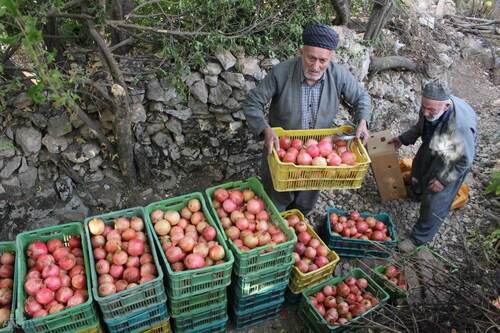
In Sna Province an average of 10 thousand tons of pomegranates are produced annually in 615 hectares of pomegranate orchards. About 400 hectares of fruit orchards in the Hawraman area are covered with pomegranate trees. According to experts, we can say that about 20 tons of pomegranates are produced per hectare. After the construction of the Daryan dam, several hectares of pomegranate orchards in the Hawraman area have been submerged and destroyed and nothing has been done to compensate for this loss so far. Generally, the pomegranate grows on the steep lands and Hawraman area has this condition so it is possible to revive and develop pomegranate gardens by removing some legal barriers in this area. These orchards have created job opportunities for more than 1100 people in Sna Province.
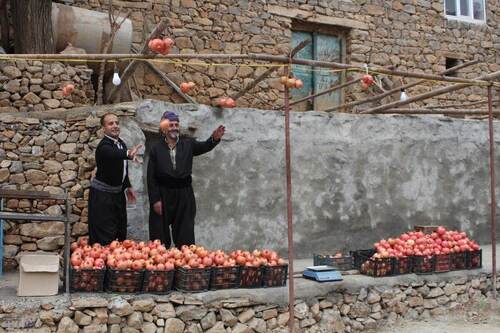
In Sna Province, Sawlawa city has the largest area of pomegranate orchards, and more than 80% of the pomegranates of Sna Province which is more than 8000 tons per year, are produced in pomegranate orchards belonging to Zhiwar, Bilbar, Slen, and Nawa villages. The pomegranate produced in these areas is sent to Sna, Kermashan, and Tehran and according to the amount of production, it only can be consumed in the domestic areas and cannot be exported abroad.
A part of Hawraman area is located in Kermashan Province and every year 4 thousand tons of pomegranate is produced in Kermashan gardens. The amount of pomegranate produced per hectare in Kermashan Province is about 6 to 7 tons. The area dedicated to producing pomegranate in Kermashan Province is 950 hectares and this has created job opportunities for almost 1000 people. The largest number of pomegranate orchards in the Hawraman part of Kermashan Province are located in Nodsha, Nawsud, and Pawa cities.
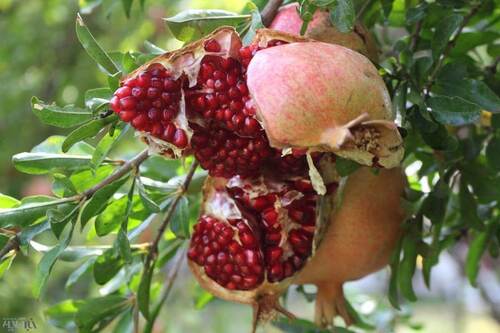
The characteristics of Pomegranate and its components
Pomegranates are very useful for cleansing the blood strengthening the nerves and treating chest pain, cough, and stomach pain. These beneficial characteristics of pomegranate have made Hawraman people make vinegar, Doshaw (a paste like sauce), and juice from this fruit and this difficult task is mostly done by the hardworking women of this area. After making Doshaw, the pomegranate skin is used to make natural colors and medicine.
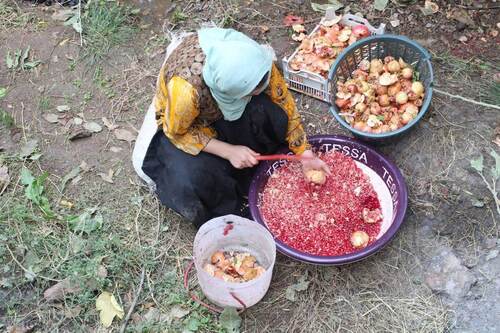
Women's role in making Doshaw
Every year at the beginning of pomegranate season, the women of Hawraman villages separate the pomegranates that are cracked or very small. They beat these pomegranates with a bat-like tool to separate the skin from the fruit. Later, they beat the little pieces of the fruit to separate the seed inside them and extract the juice. After this, the pomegranate juice is poured into a large pot and it will be boiled for quite some time in order to make Doshaw.
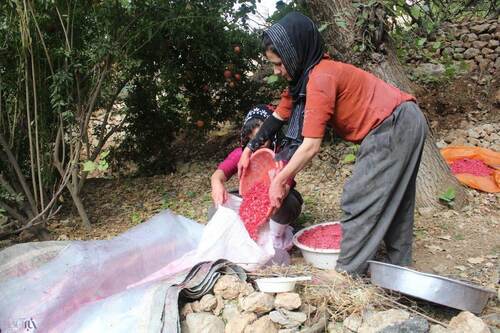
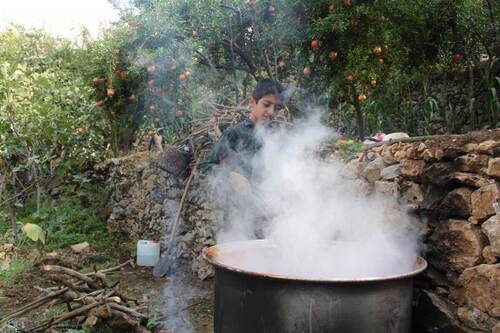
Hawraman Pomegranate Festival
Every year pomegranate festival is held in Sna Province from 25 to 27 October for three days in all four villages of Zhiwar, Bilbar, Slen, and Naw attended by journalists, photographers, and locals. In the presence of judges and county officials, the best single image, best photo collection as well as best notes and reports will be awarded.
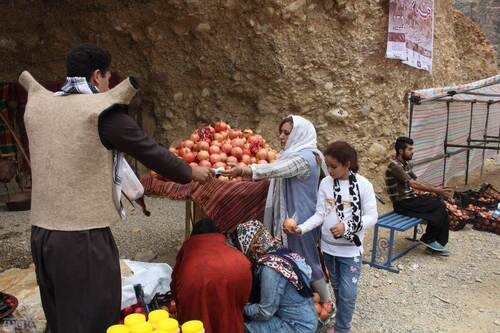
In Kermashan Province this festival is held in Pawa City and Baingan, Hajin, Daryan, Sharan, Khanaqa, Nosma, Satari, Dodan, and Zardoi villages for nine days. Adding the pomegranate festival to Iran and the area's tourist calendar and introducing this occasion to foreign tourists can affect the revival of tourism in Hawraman greatly. The goal of this festival is to help the agricultural development of this region. Attracting tourists to the Hawraman region can increase people's income and production in this region. In addition to this, another important impact of this festival is to reduce migration from villages to cities.
